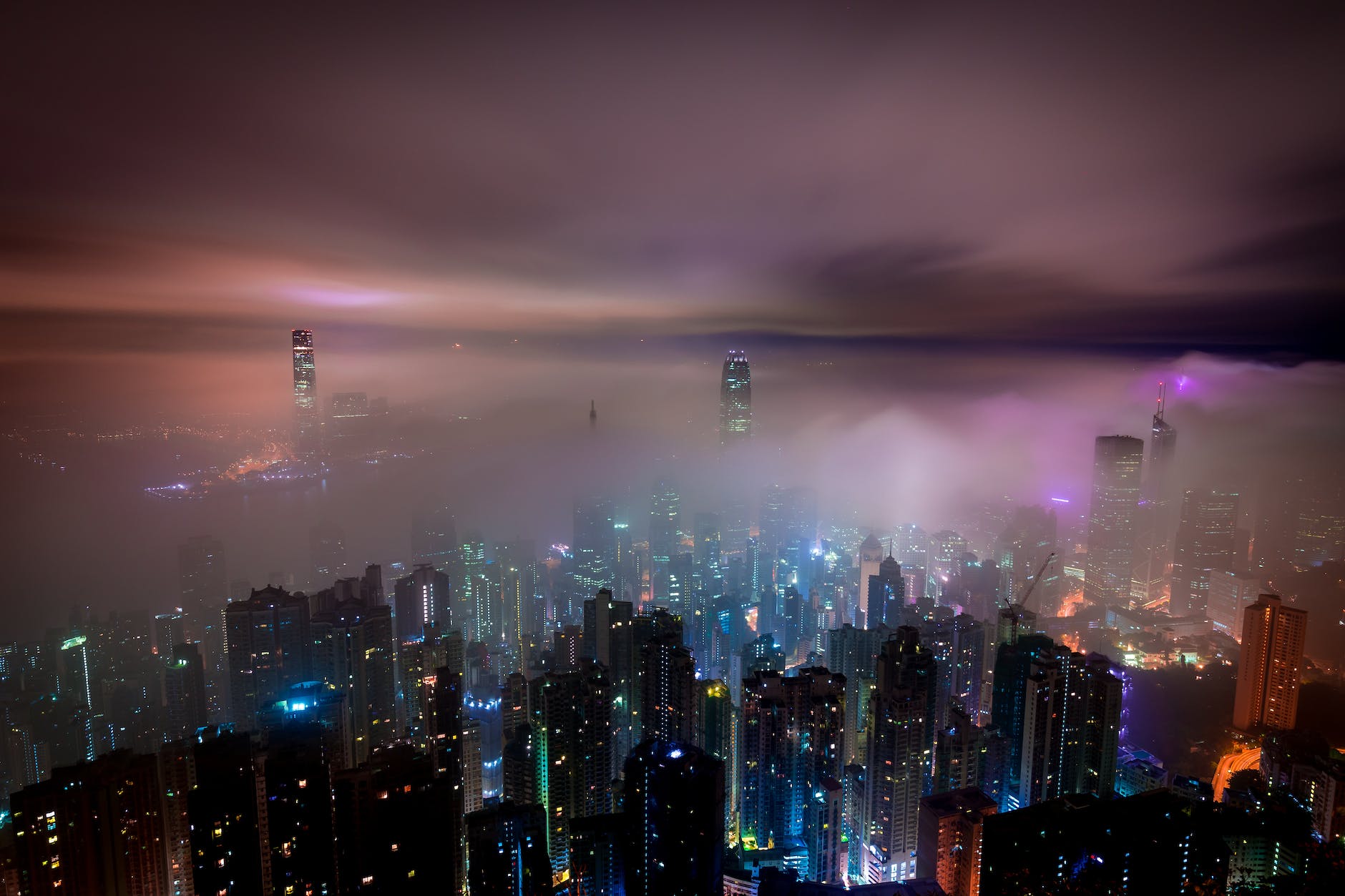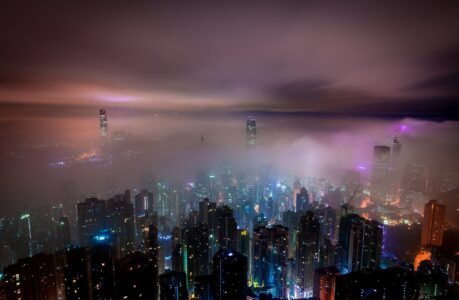If you love gazing up at the night sky with your telescope, you’ve probably noticed how much harder it is to see stars and other celestial bodies in urban areas. This is due to a phenomenon called light pollution, which is caused by excessive artificial light in the environment. In this article, we’ll explore what light pollution is, its impact on amateur astronomy, and what you can do to reduce its effects.
What is Light Pollution?
Light pollution occurs when artificial light from streetlights, buildings, billboards, and other sources overwhelms the natural darkness of the night sky. This can make it difficult or impossible to see stars and other celestial objects, and it can also have negative effects on the environment and human health.
There are several types of light pollution, including skyglow, which is the brightening of the night sky over populated areas, and glare, which is the excessive brightness of a light source that can make it difficult to see nearby objects.
The Impact of Light Pollution on Amateur Astronomy
Light pollution has a significant impact on amateur astronomy. It can make it harder to see faint objects, such as galaxies and nebulae, and it can also reduce the contrast between bright and dark areas of the night sky. This means that amateur astronomers may have to travel farther away from urban areas to find dark skies that are suitable for stargazing.
In addition, light pollution can interfere with astronomical observations by affecting the accuracy of telescopes and other instruments. For example, it can cause unwanted reflections, flares, and halos in telescope images, making it more difficult to study celestial objects.
The Environmental Impact of Light Pollution
Light pollution not only affects amateur astronomy but also has a negative impact on the environment. It disrupts natural ecosystems and can interfere with the behavior of animals, including birds, insects, and sea turtles. For example, sea turtles are attracted to artificial light, which can cause them to become disoriented and wander away from the ocean, putting them at risk of dehydration and predation.
Light pollution also wastes energy and contributes to climate change by increasing the demand for electricity. According to the International Dark-Sky Association, outdoor lighting in the United States alone uses up to 2.2 billion kilowatt-hours of energy each year, resulting in the emission of 3.3 million tons of carbon dioxide.
Measuring Light Pollution
To understand the severity of light pollution in an area, it’s important to measure it. One commonly used measure is the Bortle Scale, which rates the darkness of the sky on a scale of 1 to 9, with 1 being the darkest and 9 being the brightest. The scale takes into account factors such as sky brightness, the visibility of stars and other celestial objects, and the presence of light domes or glare.
Another measure is the Sky Quality Meter (SQM), which is a handheld device that measures the brightness of the sky in magnitudes per square arcsecond. The lower the number, the darker the sky. The SQM can be used to measure the brightness of the sky in different locations and compare them to each other.
By measuring light pollution, astronomers and other researchers can better understand its impact on the environment and human health, and take steps to reduce its effects. For example, measurements can be used to identify areas that are suitable for dark sky preserves, which are protected areas where light pollution is minimized to allow for better stargazing and astronomical observations.
How Light Pollution Affects Amateur Astronomers
Light pollution can have a significant impact on amateur astronomers. Here are some ways in which it affects stargazing and astronomical observations:
Reduced Visibility
The most obvious effect of light pollution is reduced visibility of the night sky. When there is too much artificial light in the environment, it can be difficult or impossible to see faint objects such as galaxies, nebulae, and star clusters. The sky appears washed out and stars become difficult to distinguish from the background glow.
Loss of Contrast
Light pollution can also reduce the contrast between bright and dark areas of the night sky. This makes it harder to see the details of celestial objects, such as craters on the moon or the spiral arms of a galaxy. The loss of contrast can also make it difficult to distinguish between stars and other celestial objects, and can affect the accuracy of astronomical observations.
Interference with Observations
Light pollution can interfere with astronomical observations by affecting the accuracy of telescopes and other instruments. It can cause unwanted reflections, flares, and halos in telescope images, making it more difficult to study celestial objects. In addition, light pollution can cause light to scatter in the atmosphere, which can reduce the quality of astronomical images.
Difficulty Finding Observing Locations
Amateur astronomers often have to travel far away from urban areas to find dark skies that are suitable for stargazing. This can be challenging and time-consuming, especially for those who live in densely populated areas. In addition, light pollution can make it difficult to find observing locations that are truly dark, as even small amounts of artificial light can interfere with astronomical observations.
Difficulty with Equipment
Light pollution can also affect the performance of astronomical equipment. For example, CCD cameras and other imaging devices can be affected by stray light, which can reduce the quality of images. Similarly, telescopes that are not properly shielded from artificial light can suffer from reduced contrast and other issues.
Conclusion
Light pollution is a significant problem for amateur astronomers, as it can reduce visibility, contrast, and interfere with observations. However, by taking steps to reduce its effects, such as using appropriate lighting, turning off unnecessary lights, and supporting dark-sky initiatives, amateur astronomers can continue to enjoy the night sky while also protecting the environment and our planet.
Coping with Light Pollution
While light pollution can be a significant problem for amateur astronomers, there are several ways to cope with its effects. Here are some strategies that can help:
Use Filters
One way to cope with light pollution is to use filters on your telescope or camera. Light pollution filters are designed to block out the wavelengths of light that are most affected by artificial light, such as those emitted by sodium vapor lamps. These filters can improve the contrast and visibility of celestial objects, making them easier to observe.
Choose Observing Locations Wisely
Another way to cope with light pollution is to choose observing locations that are far away from urban areas and have minimal light pollution. You can use websites such as Dark Sky Finder to find dark sky locations near you. Some amateur astronomers even travel to remote locations, such as national parks, to find truly dark skies.
Use Appropriate Lighting
If you need outdoor lighting, use fixtures that are designed to minimize light pollution, such as those with shields or hoods that direct light downward. You can also use motion-activated lights that only turn on when needed. By using appropriate lighting, you can reduce light pollution in your area and protect the night sky.
Turn off Unnecessary Lights
One of the simplest ways to cope with light pollution is to turn off unnecessary lights. For example, turn off lights when they are not needed, such as during the day or when you are not in the room. This can help to reduce light pollution in your area and also save energy.
Support Dark-Sky Initiatives
Supporting organizations such as the International Dark-Sky Association can also help to reduce light pollution. These organizations work to promote responsible outdoor lighting and protect dark skies around the world. By supporting their efforts, you can help to preserve the beauty of the night sky for future generations.
Conclusion
While light pollution can be a significant problem for amateur astronomers, there are several ways to cope with its effects. By using filters, choosing observing locations wisely, using appropriate lighting, turning off unnecessary lights, and supporting dark-sky initiatives, amateur astronomers can continue to enjoy the night sky while also protecting the environment and our planet.
What You Can Do to Reduce the Effects of Light Pollution
Fortunately, there are several things you can do to reduce the effects of light pollution and enjoy the night sky. Here are some tips:
- Use appropriate lighting: If you need outdoor lighting, use fixtures that are designed to minimize light pollution, such as those with shields or hoods that direct light downward. You can also use motion-activated lights that only turn on when needed.
- Turn off unnecessary lights: Turn off lights when they are not needed, such as during the day or when you are not in the room.
- Support dark-sky initiatives: Support organizations such as the International Dark-Sky Association, which works to promote responsible outdoor lighting and protect dark skies around the world.
- Choose observing locations wisely: Choose observing locations that are far away from urban areas and have minimal light pollution. You can use websites such as Dark Sky Finder to find dark sky locations near you.
- Use light pollution filters: Use filters on your telescope or camera to reduce the effects of light pollution on your observations.
Final Thoughts
Light pollution is a significant issue that affects amateur astronomy, the environment, and human health. By taking steps to reduce its effects, we can enjoy the night sky while also protecting our planet and its inhabitants.

